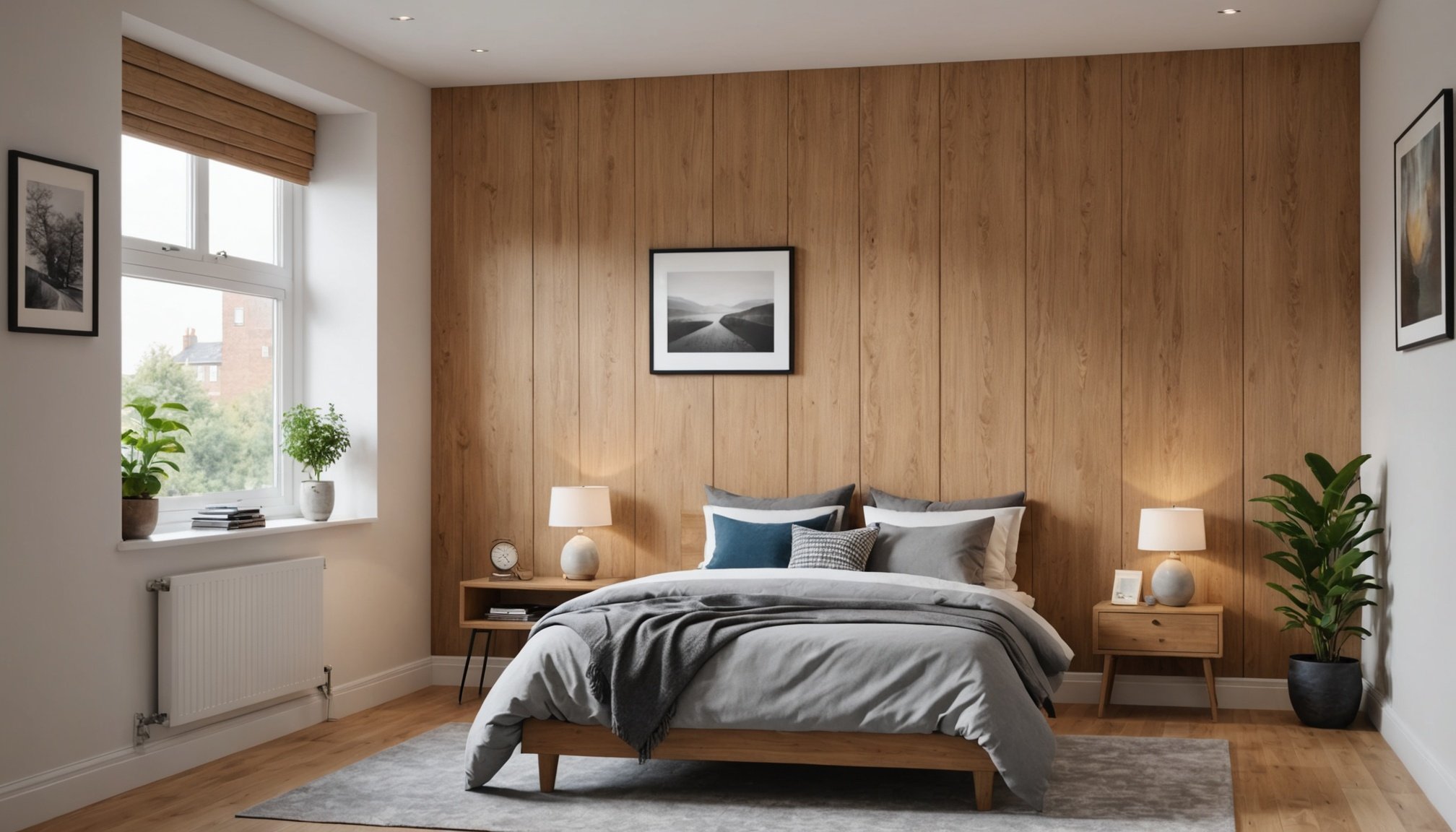Top Strategies to Reduce Noise Between Shared Walls in UK Apartments: A Comprehensive Guide
Living in an apartment can be a convenient and often necessary choice for many, especially in urban areas like those in the UK. However, one of the most common complaints among apartment dwellers is the issue of noise transmission through shared walls. Whether it’s the sound of noisy neighbours, loud music, or even just the everyday noises of living, it can be a significant disturbance. Here’s a detailed guide on how to reduce noise between shared walls in UK apartments.
Understanding the Problem: Noise Transmission Through Walls
Before diving into the solutions, it’s essential to understand how noise travels through walls. Sound transmission can occur through two main paths: airborne sound and impact sound. Airborne sound includes noises like talking, music, or TV sounds, while impact sound involves physical impacts like footsteps or door slamming.
A lire en complément : Discover the Advantages of Utilizing a Convection Heater in Your UK Conservatory
Airborne Sound
Airborne sound travels through the air and can penetrate walls if they are not adequately insulated. This type of sound is more common and can be reduced with the right acoustic insulation materials.
Impact Sound
Impact sound, on the other hand, is generated by physical contact with the wall, such as footsteps or furniture moving. This type of sound requires more robust solutions, often involving the use of high mass materials and specialized mounting systems.
A lire aussi : Essential Tips for Installing Heated Floors in Your UK Bathroom Renovation
Soundproofing Solutions for Shared Walls
Acoustic Insulation Materials
One of the most effective ways to reduce noise is by using the right acoustic insulation materials. Here are some of the top materials you can use:
- Mineral Wool: This is a popular choice for sound insulation due to its high density and ability to absorb sound waves. It can be installed in the cavity between the walls.
- Acoustic Plasterboard: This type of plasterboard is specifically designed to reduce sound transmission. It is thicker and denser than regular plasterboard.
- Mass Loaded Vinyl: This is a flexible sheet loaded with heavy metal particles that absorb sound energy. It can be attached to the wall surface before adding another layer of plasterboard.
- Loaded Vinyl with Reductoclip Independent Mounting System: This system involves attaching loaded vinyl to a stud wall using reductoclip mounts, which decouple the vinyl from the wall, significantly reducing sound transmission.
High Mass Walls
High mass walls are another effective solution. These walls are made from dense materials that absorb sound energy rather than transmitting it.
- Solid Walls: Solid walls made from brick or concrete are naturally high in mass and can significantly reduce sound transmission.
- Stud Walls with High Mass Materials: If you have a stud wall, you can increase its mass by adding high mass materials like mass loaded vinyl or acoustic plasterboard.
Practical Steps to Soundproof Your Walls
Here are some practical steps you can take to soundproof your shared walls:
Prepare the Wall
Before starting, ensure the wall is clean and free from any debris. Remove any old plaster or wallpaper to get a smooth surface.
Install Insulation
- Cavity Insulation: Fill the cavity between the walls with mineral wool or another insulation material.
- Surface Insulation: Attach mass loaded vinyl or acoustic plasterboard to the wall surface.
Use Decoupling Mounts
Decoupling mounts like reductoclip independent mounts can be used to attach the insulation materials to the wall, ensuring they do not come into direct contact with the wall, thus reducing sound transmission.
Seal Gaps and Cracks
Ensure all gaps and cracks around doors, windows, and any other openings are sealed with acoustic sealants. This prevents airborne sound from escaping or entering through these gaps.
Door and Window Solutions
Soundproof Doors
- Solid Core Doors: Replace hollow doors with solid core doors, which are more effective at reducing sound transmission.
- Door Seals: Use door seals or weatherstripping around the door to prevent sound from escaping or entering.
Soundproof Windows
- Double Glazing: Install double-glazed windows, which have a gap between the two panes of glass that acts as an insulator.
- Secondary Glazing: If replacing windows is not feasible, consider secondary glazing solutions where a second pane of glass is installed on the inside of the existing window.
Additional Tips and Considerations
Consult Professionals
If you are not comfortable with the installation process, it is highly recommended to consult professionals who specialize in soundproofing.
Budget Considerations
Soundproofing can range from inexpensive DIY solutions to more costly professional installations. Set a budget and choose solutions that fit within it.
Neighbourly Relations
Sometimes, the best solution is to communicate with your neighbours. If the noise is coming from a specific source, talking to your neighbours might resolve the issue without the need for extensive soundproofing.
Comparison of Soundproofing Materials and Methods
Here is a comparison table of some common soundproofing materials and methods:
| Material/Method | Effectiveness | Cost | Ease of Installation |
|---|---|---|---|
| Mineral Wool | High | Moderate | Medium |
| Acoustic Plasterboard | High | Moderate | Medium |
| Mass Loaded Vinyl | Very High | High | Medium |
| Loaded Vinyl with Reductoclip | Very High | High | Low |
| Solid Walls | Very High | Very High | Low |
| Decoupling Mounts | High | Moderate | Low |
| Door Seals and Weatherstripping | Medium | Low | High |
| Double Glazing | Very High | Very High | Low |
| Secondary Glazing | High | High | Medium |
Real-Life Examples and Anecdotes
A Successful DIY Project
One homeowner in London decided to soundproof their shared wall due to constant noise from their neighbours. They started by cleaning the wall and then installed mass loaded vinyl followed by acoustic plasterboard. They also sealed all gaps and cracks around the doors and windows. The result was a significant reduction in noise, making their living space much more comfortable.
Professional Installation
A family in Manchester opted for a professional soundproofing service due to the complexity of their wall structure. The professionals installed a decoupling system with reductoclip mounts and added high mass materials to the walls. The family reported a dramatic reduction in noise, allowing them to enjoy their home without disturbances.
Reducing noise between shared walls in UK apartments is a feasible task with the right strategies and materials. Whether you choose to go the DIY route or hire professionals, understanding the types of sound transmission and using the appropriate soundproofing solutions can make a significant difference in your living environment.
Key Takeaways
- Use High Mass Materials: Materials like mass loaded vinyl and acoustic plasterboard are highly effective.
- Decouple Insulation: Use decoupling mounts to ensure insulation materials do not come into direct contact with the wall.
- Seal Gaps and Cracks: Ensure all gaps and cracks are sealed to prevent airborne sound from escaping or entering.
- Consult Professionals: If unsure, consult professionals for the best results.
By following these strategies and tips, you can create a more peaceful and comfortable living space, free from the disturbances of noisy neighbours.











